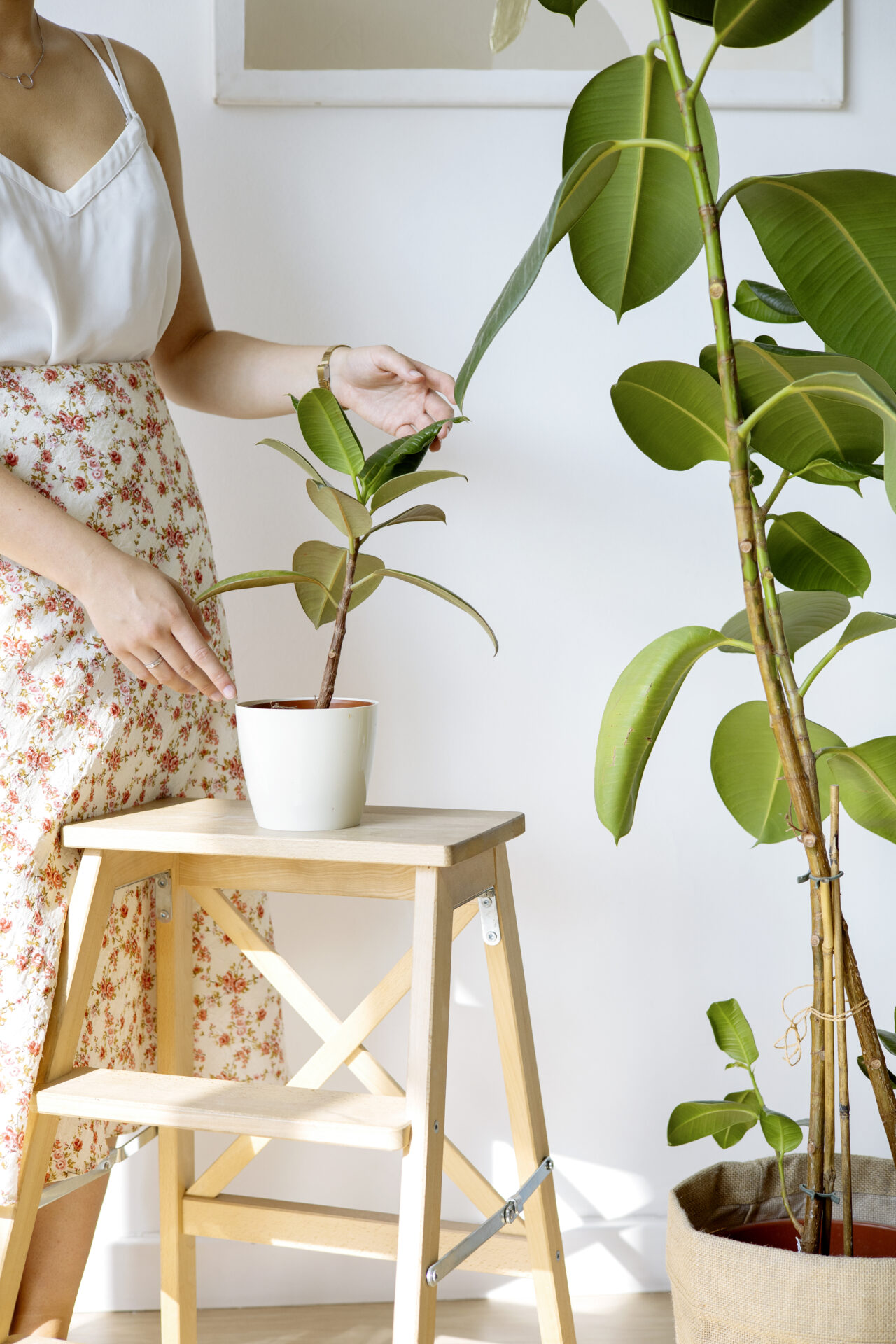Introducing children to the joys of gardening can be an enriching experience for their personal growth and foster a deeper connection with nature. However, not everyone can access an outdoor space suitable for traditional gardening.
This article will explore an innovative and engaging solution—creating an indoor vertical garden for children. We will discuss the benefits of this space-saving approach, provide step-by-step instructions on how to set up the vertical garden, and offer age-appropriate plant suggestions that will captivate your child’s interest.
Join us as we delve into indoor vertical gardening for children and unlock the potential of nurturing young green thumbs right in the comfort of your home.
Benefits of Indoor Vertical Gardens for Kids
Indoor vertical gardens offer a unique and engaging way for children to learn about gardening and connect with nature. This section will discuss the many benefits of introducing kids to indoor vertical gardening, from enhancing their cognitive and motor skills to promoting environmental awareness.
Educational and Cognitive Development
Indoor vertical gardens provide an excellent opportunity for children to learn about plant life cycles, photosynthesis, and the importance of proper care for living organisms. This hands-on experience encourages curiosity and critical thinking, helping build a strong foundation for cognitive development.
Motor Skill Development and Sensory Exploration
Tending to an indoor vertical garden requires children to engage in various activities, such as planting seeds, watering, and pruning. These tasks help develop and refine fine motor skills, hand-eye coordination, and sensory exploration. A vertical garden’s diverse textures, colors, and scents can stimulate their senses and provide a rich sensory experience.
Encourages Responsibility and Nurtures Empathy
As children take ownership of their indoor vertical garden, they learn the importance of responsibility and consistency in caring for their plants. This fosters a sense of empathy and compassion as they become more attuned to the needs of living organisms and develop a deeper connection with the natural world.
Promotes Environmental Awareness and Sustainability
Engaging in indoor vertical gardening makes children more aware of the importance of sustainable practices and human’ environmental impact. With guidance, they can learn about recycling, water conservation, and the benefits of locally grown produce. This early exposure to eco-friendly practices helps to cultivate a generation of environmentally conscious individuals.
Space-Saving and Adaptable Solution
Indoor vertical gardens are a practical solution for families with limited outdoor space or those living in urban environments. This approach maximizes vertical space and can be adapted to suit any room size or layout. Choosing the proper containers is crucial for a successful indoor vertical garden. Check out our Selecting the Perfect Indoor Vertical Garden Containers guide for helpful tips.
Introducing children to indoor vertical gardening can be a fun and fulfilling experience, with numerous benefits for their personal growth and development. Not only does it provide valuable educational opportunities, but it also instills a sense of responsibility and a deeper connection with the environment.
So, why not embark on this exciting journey and create an indoor vertical garden for your child to explore? With creativity and guidance, you can nurture their green thumb and inspire a lifelong love for gardening.
Teaching Kids about Plant Care and Maintenance
Once you have set up your indoor vertical garden, teaching your child about proper plant care and maintenance is essential. This section will discuss various aspects of plant care, from watering and fertilizing to pest management, and provide age-appropriate tips to ensure your child’s gardening experience is educational and enjoyable.
Delving into the World of Watering
Teaching children about the importance of watering plants is crucial. Start by explaining that plants need water to survive and grow, just as humans do. Show them how to check the soil’s moisture by touching it with their fingers and guide them on when to water based on each plant’s specific needs.
You can also involve them in choosing the right watering tools, such as spray bottles, cans, or self-watering systems, depending on the size of your indoor vertical garden and your child’s age.
Fostering Fertilizing Fundamentals
Introduce your child to the concept of plant nutrition and the role of fertilizers in promoting healthy growth. Discuss the different types of fertilizers available, such as organic or chemical, and explain how they provide essential nutrients to the plants.
Demonstrate how to apply the appropriate amount of fertilizer, and encourage your child to participate in this process under your supervision. Remember to emphasize the importance of following the recommended guidelines for each plant and fertilizer type.
Pruning and Training Plants with Precision
Explain to your child the importance of regular pruning to maintain the health and appearance of their indoor vertical garden. Demonstrate the proper techniques for trimming and pruning, such as making clean cuts at an angle and removing dead or diseased foliage.
Encourage your child to practice these skills using child-safe gardening tools. Additionally, discuss plant training techniques, such as staking or trellising, to guide the growth of climbing or vining plants in their vertical garden.
Pest Management and Plant Health
Teach your child about common pests that can affect indoor plants and how to identify signs of infestation. Discuss eco-friendly pest control methods, such as introducing beneficial insects, using natural repellents, or manually removing pests. Please encourage your child to regularly inspect their indoor vertical garden for any signs of pests or diseases and to take preventive measures to maintain a healthy environment for their plants.
By providing your child with the knowledge and tools necessary for proper plant care and maintenance, they will develop a deeper understanding of the intricacies of gardening and gain a sense of pride in their indoor vertical garden. This hands-on experience cultivates a love for nature and encourages a lifelong passion for gardening. So, embark on this exciting journey with your child, and watch as their green thumb blossoms!
Easy DIY Vertical Garden Ideas for Children
Creating an indoor vertical garden for children is an exciting and educational way to introduce them to gardening. This section will explore several easy DIY vertical garden ideas that captivate your child’s imagination and inspire creativity. These projects are designed to be simple, fun, and engaging, allowing you and your child to bond while building a unique and functional indoor garden.
Upcycled Shoe Organizer Garden
Transform an old hanging shoe organizer into a thriving vertical garden by filling its pockets with soil and planting your child’s favorite small plants or herbs. This cost-effective and environmentally friendly project teaches kids about repurposing items and helps them understand the concept of sustainable living. Hang the completed shoe organizer garden near a sunny window, and watch as your child’s excitement grows along with their plants.
Colorful Painted Tin Can Garden
Save those empty tin cans from the recycling bin and turn them into vibrant planters for your indoor vertical garden. Please encourage your child to unleash their artistic side by painting and decorating the cans with bright colors and patterns. Attach the cans to a sturdy board or hang them from a rod using strong wire or twine. This DIY project not only adds a pop of color to your child’s living space but also teaches them about upcycling and resourcefulness.
Magnetic Wall Planters
Create a versatile and interactive vertical garden by attaching small, lightweight planters to a magnetic board or a repurposed baking sheet. Secure the planters with strong magnets, and let your child arrange them in their desired layout.
Please encourage your child to experiment with different plant combinations and designs, fostering their creativity and problem-solving skills. This magnetic wall planter idea is ideal for small spaces and can be easily updated or rearranged as your child’s interests evolve.
Vertical Pallet Garden
With adult supervision, repurpose a wooden pallet to create a rustic and spacious vertical garden for your child. Line the pallet with landscape fabric, fill it with soil, and plant various herbs, flowers, or small vegetables. This project teaches children about woodworking and construction and introduces them to growing their food. Depending on your available space and preferences, a pallet garden can be leaned against a wall or hung.
Stacked Planter Tower
Build a stacked planter tower using pots or containers of various sizes that can nest within each other. Fill the containers with soil and plants, then stack them from largest to smallest, creating a visually appealing and space-saving vertical garden.
This project allows your child to explore different plant arrangements and learn about the importance of proper drainage and plant spacing. A stacked planter tower can be easily disassembled and rearranged, providing endless possibilities for creativity and learning.
Involving your child in creating their indoor vertical garden fosters their love for gardening and teaches valuable life skills, such as responsibility, creativity, and sustainability. These easy DIY vertical garden ideas offer a unique and engaging experience for you and your child. So, roll up your sleeves, gather your materials, and start building an indoor garden that will inspire your child’s imagination and create lasting memories.
Encouraging Creativity and Responsibility through Gardening
An indoor vertical garden provides children with a fun and educational experience and an excellent platform to encourage their creativity and sense of responsibility. This section will explore various ways you can use gardening activities to inspire your child’s imagination and teach them valuable life skills, ultimately fostering their personal growth and development.
Designing a Personalized Garden Space
Allow your child to take an active role in designing their indoor vertical garden. Please encourage them to choose their favorite plants, colors, and garden accessories, ensuring the space reflects their personality and preferences. Involving them in the decision-making process sparks their creativity and instills a sense of ownership and responsibility for the garden’s success.
Experimenting with Plant Arrangements and Combinations
Teach your child the art of combining various plant species, textures, and colors to create visually appealing designs. Please encourage them to experiment with different arrangements and plant groupings, fostering their artistic expression and problem-solving skills. This activity can also serve as a valuable lesson in plant compatibility and understanding each plant’s needs and requirements.
Creating DIY Garden Decorations and Accessories
Please encourage your child to express creativity by creating unique garden decorations and accessories. They can paint and personalize plant containers, create plant markers, or craft whimsical garden ornaments using recycled materials. These activities add a personal touch to their indoor vertical garden and teach them about upcycling and the value of repurposing items.
Documenting the Garden’s Progress
Invite your child to maintain a garden journal or create a digital photo album to track the growth and progress of their plants. This documentation process allows them to observe and appreciate the changes that occur over time, reinforcing their understanding of plant life cycles and encouraging a long-term commitment to their garden’s success.
Setting Goals and Celebrating Achievements
Please work with your child to set realistic goals for their indoor vertical garden, such as growing a specific number of plants, harvesting herbs or vegetables, or creating a visually striking display. Regularly review their progress and celebrate their accomplishments, reinforcing their sense of responsibility and boosting their self-esteem.
By incorporating these activities into your child’s gardening experience, you can effectively harness the power of indoor vertical gardening to inspire their creativity and nurture their sense of responsibility. As they cultivate their green thumb, they will develop essential life skills and an appreciation for the natural world. So, unleash your child’s potential and embark on a journey of growth and discovery through indoor vertical gardening.
Choosing Child-Friendly Plants for a Vertical Garden for Children
Selecting the right plants is crucial for ensuring a positive and engaging experience when creating an indoor vertical garden for children. The ideal plants should be easy to care for, safe for children, and visually appealing to spark curiosity and interest. This section will explore various child-friendly plant options and offer tips on choosing the most suitable species for your child’s indoor vertical garden.
Opting for Low-Maintenance Plants
Introducing your child to the gardening world is an exciting journey, but it’s essential to select plants that are easy to maintain, especially for beginners. Low-maintenance plants, such as spiders, snake plants, or pothos, are perfect options, as they can tolerate light conditions and require minimal care. These resilient species will enable your child to develop their gardening skills and build confidence without becoming overwhelmed by complex plant care routines.
Creating a Colorful and Visually Appealing Display
Children are naturally drawn to vibrant colors and striking patterns, so incorporating visually appealing plants can help to capture their attention and inspire their creativity. Consider including flowering plants, such as African violets, begonias, or peace lilies, which offer beautiful colors and textures. Select foliage plants with unique leaf patterns or variegation, such as calatheas, ferns, or crotons, to create an engaging and dynamic display.
Exploring Edible Plants and Herbs
Growing edible plants in your child’s vertical garden can be an excellent way to teach them about their food source and encourage healthy eating habits. Select easy-to-grow herbs, such as basil, mint, or parsley, which can be harvested and used in various recipes.
Small fruiting plants, such as cherry tomatoes, strawberries, or peppers, can also be grown in a vertical garden with proper care and attention. Engage your child in planting, nurturing, and harvesting their edible plants, fostering a sense of accomplishment and pride in their homegrown produce.
Ensuring Plant Safety and Avoiding Toxic Species
When choosing plants for your child’s indoor vertical garden, it’s crucial to consider plant safety and avoid any species that may be toxic or harmful. Please thoroughly research and consult reputable sources to determine each plant’s safety before including it in your garden.
Some popular houseplants, such as philodendrons, dieffenbachias, or ZZ plants, may not be suitable for homes with young children or pets due to their toxicity. Always prioritize safety and select non-toxic alternatives to ensure your child’s positive and secure gardening experience.
Adapting Plant Choices to Your Indoor Environment
Finally, consider the specific conditions of your indoor environment when selecting plants for your child’s vertical garden. Light levels, humidity, and temperature can significantly impact a plant’s health and growth.
Choose plants well-suited to your home’s conditions, and provide adequate support in supplemental lighting or humidity control if necessary. By selecting plants that thrive in your particular environment, you can ensure a successful and enjoyable indoor gardening experience for your child.
Carefully selecting child-friendly plants for your indoor vertical garden will create a captivating and educational experience for your little gardener. By incorporating low-maintenance, visually appealing, and safe plant species, you can foster your child’s love for gardening and nurture their connection to nature.
Remember to adapt your plant choices to your indoor environment. Prioritise safety to create a thriving, enjoyable vertical garden that will inspire and engage your child for years.







Leave a reply